Ancymidol
Synonym(s):α-Cyclopropyl-α-(4-methoxyphenyl)-5-pyrimidinemethanol;reducymol;thritone
- CAS NO.:12771-68-5
- Empirical Formula: C15H16N2O2
- Molecular Weight: 256.3
- MDL number: MFCD00072501
- EINECS: 235-814-7
- SAFETY DATA SHEET (SDS)
- Update Date: 2024-06-18 21:58:05
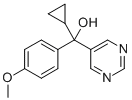
What is Ancymidol?
Chemical properties
Ancymidol is a white to buff colored crystalline or granular solid. Slightly aromatic odor.
The Uses of Ancymidol
Ancymidol has been used as the cytochrome P450 inhibitor to study its effects on Cyanidioschyzon merolae?strain.
The Uses of Ancymidol
Plant growth regulator.
Definition
ChEBI: A tertiary alcohol that is methanol in which the hydrogens attached to the carbon are replaced by cyclopropyl, p-methoxyphenyl and pyrimidin-5-yl groups. By inhibiting gibberellin biosynthesis, ancymidol reduces plant growth, resulting in redu ed internode elongation and thus more compact plants. It is used in the commercial production of a wide variety of container-grown bedding and foliage plants, including chrysanthemums, Easter lilies and poinsettias.
General Description
Ancymidol, a-cyclopropyl-a-(4-methoxyphenyl)-5-pyrimidinemethanol (EL-53 1), a plant growth retardant is a synthetic pyrimidine analogue. It is also a weak fungitoxic.
Biochem/physiol Actions
Ancymidol is a pyrimidine-class plant cell endocrine disruptor plant growth regulator that interferes with gibberellin and cellulose biosynthesis.
Potential Exposure
Ancymidol is a plant growth regulator registered for treating container-grown herbaceous plants, ornamental woody shrubs, and bedding plants grown in greenhouses and other plant bedding areas for primarily commercial production. Growth regulator used on plants such as chrysanthemums, certain lilies, and poinsettias effects produced by ancymidol are the result of inhibition of gibberellin biosynthesis. It produces a more compact growth form by suppressing elongation.
Incompatibilities
Dust may form explosive mixture with air. Ancymidol may react vigorously with oxidizing agents. Mixtures with concentrated hydrogen peroxide or strong mineral acids (e.g., nitric, sulfuric, perchloric) may cause explosions. Mixtures with hypochlorous acid, lead perchlorate, chlorine, bleaches, including sodium hypochlorite; mixed water/carbon tetrachloride solution; trichloroisocyanuric acid form methyl hypochlorite, which can be explosive, especially when exposed to sunlight or heat. May react with metallic aluminum at high temperature. Flow or agitation of substance may generate electrostatic charges due to low conductivity; ground all equipment containing this material. May attacks some plastics, rubber, and coatings.
Waste Disposal
Dispose of contents and container to an approved waste disposal plant. All federal, state, and local environmental regulations must be observed. References
Properties of Ancymidol
| Melting point: | 110-111°C |
| Boiling point: | 399.55°C (rough estimate) |
| Density | 1.1055 (rough estimate) |
| refractive index | 1.6280 (estimate) |
| storage temp. | 2-8°C |
| solubility | Chloroform (Slightly), Methanol (Slightly) |
| form | Solid |
| pka | 12.62±0.29(Predicted) |
| color | White to Off-White |
| Water Solubility | 0.65g/L(25 ºC) |
| λmax | 272nm(lit.) |
| CAS DataBase Reference | 12771-68-5(CAS DataBase Reference) |
| NIST Chemistry Reference | Ancymidol(12771-68-5) |
| EPA Substance Registry System | Ancymidol (12771-68-5) |
Safety information for Ancymidol
| Signal word | Warning |
| Pictogram(s) |
 Exclamation Mark Irritant GHS07 |
| GHS Hazard Statements |
H315:Skin corrosion/irritation H319:Serious eye damage/eye irritation H335:Specific target organ toxicity, single exposure;Respiratory tract irritation |
| Precautionary Statement Codes |
P280:Wear protective gloves/protective clothing/eye protection/face protection. P304+P340:IF INHALED: Remove victim to fresh air and Keep at rest in a position comfortable for breathing. P305+P351+P338:IF IN EYES: Rinse cautiously with water for several minutes. Remove contact lenses, if present and easy to do. Continuerinsing. |
Computed Descriptors for Ancymidol
New Products
4-AMINO-TETRAHYDRO-PYRAN-4-CARBOXYLIC ACID HCL 4-(Dimethylamino)tetrahydro-2H-pyran-4-carbonitrile 5-Bromo-2-nitropyridine 4-Fluorophenylacetic acid (S)-3-Aminobutanenitrile hydrochloride 4-Methylphenylacetic acid Diclofenac Potassium Mefenamic Acid IP/BP/EP/USP Diclofenac Sodium IP/BP/EP/USP Ornidazole IP Nimesulide BP Aceclofenac IP/BP/EP 3-Nitropyrazole 1-Nitropyrazole 4-Pyrazolecarboxylic acid 2-Amino-5-bromopyridine 2,5-Dibromopyridine 2H-Cyclopenta[b]furan-2,5-diol, hexahydro-4-[(1E,3R)-3-hydroxy-4-[3-(trifluoromethyl)phenoxy]-1- buten-1-yl]-, (3aR,4R,5R,6aS)- SODIUM AAS SOLUTION ZINC AAS SOLUTION BUFFER SOLUTION PH 10.0(BORATE) GOOCH CRUCIBLE SINTERED AQUANIL 5 BERYLLIUM AAS SOLUTIONRelated products of tetrahydrofuran

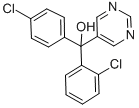

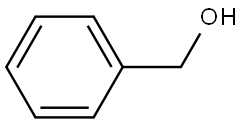
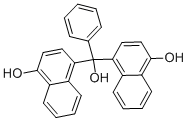

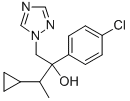

You may like
-
 Ancymidol CAS 12771-68-5View Details
Ancymidol CAS 12771-68-5View Details
12771-68-5 -
 Ancymidol 95% CAS 12771-68-5View Details
Ancymidol 95% CAS 12771-68-5View Details
12771-68-5 -
 Ancymidol CAS 12771-68-5View Details
Ancymidol CAS 12771-68-5View Details
12771-68-5 -
![Dimethyl [2-oxo-3-[3-(trifluoromethyl)phenoxy]propyl]phosphonate 99%](https://img.chemicalbook.in//Content/image/CP5.jpg) Dimethyl [2-oxo-3-[3-(trifluoromethyl)phenoxy]propyl]phosphonate 99%View Details
Dimethyl [2-oxo-3-[3-(trifluoromethyl)phenoxy]propyl]phosphonate 99%View Details
54094-19-8 -
 85-81-4 99%View Details
85-81-4 99%View Details
85-81-4 -
 1073666-54-2 (S)-3-Aminobutanenitrile hydrochloride 98+View Details
1073666-54-2 (S)-3-Aminobutanenitrile hydrochloride 98+View Details
1073666-54-2 -
 405-50-5 98+View Details
405-50-5 98+View Details
405-50-5 -
 4-Methylphenylacetic acid 98+View Details
4-Methylphenylacetic acid 98+View Details
622-47-9